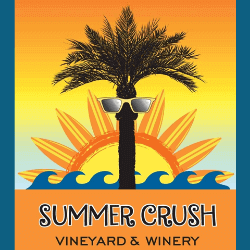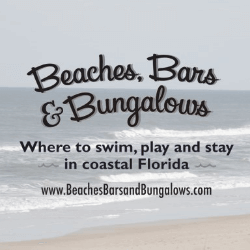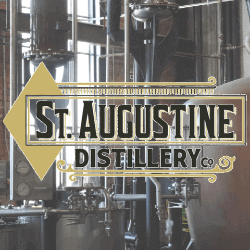EXPLORE HALLANDALE BEACH
HALLANDALE BEACH is a wonderful A1A destination located between North Miami Beach and Fort Lauderdale. In this lively seaside community residents and visitors enjoy beautiful beaches, year-round outdoor activities, shopping of every kind, performing and visual arts, casual and fine dining, night club entertainment, and two of Florida’s premier race tracks.With 17 parks scattered throughout the city and plenty of area tennis, golf, swimming, diving and boating options to fill your days, no matter what time of year you’re here, you’re likely to find lots of outdoor playtime waiting for you.Hungry? From pizza and burgers to fine dining, when your day at the beach is done head out for some terrific dining options. And when the sun sets, enjoy Hallandale’s vibrant nightlife filled with martini bars, cabaret shows, sports bars and casinos.At the end of the day whether you choose a hotel/motel, waterfront, pet friendly or beach property to call home during your stay, you’ll discover why visitors from around the corner and around the globe make Hallandale Beach an ideal choice to rejuvenate and unwind. If you’re interested in reading more about the recent happenings, here’s a link to our Hallandale Beach Journal (blog) page.
Hungry? From pizza and burgers to fine dining, when your day at the beach is done head out for some terrific dining options. And when the sun sets, enjoy Hallandale’s vibrant nightlife filled with martini bars, cabaret shows, sports bars and casinos.At the end of the day whether you choose a hotel/motel, waterfront, pet friendly or beach property to call home during your stay, you’ll discover why visitors from around the corner and around the globe make Hallandale Beach an ideal choice to rejuvenate and unwind. If you’re interested in reading more about the recent happenings, here’s a link to our Hallandale Beach Journal (blog) page.
- Stunning Hallandale Beach
- Turtle Nesting Beach (May – October)
- Spectacular Hallandale Beach
A1A-mazing stuff…
 In exploring the history of Hallandale Beach before the arrival of the first European settlers, we were introduced to the word “coontie”. Compelled to explore the word a bit further, we found a fascinating story by Susan Ford Collins on Flickr to share with you. Long before European settlers arrived in Florida, Native Americans used the coontie plant as a source of starch and the word itself comes from the Seminole meaning “bread” or “white root” because the roots can be made into flour. After being a money crop of the first Florida pioneers, the plant was nearly wiped out and with it, would likely have come the extinction of the iridescent blue and orange Atala Butterfly. Coontie plants contain a natural toxin which Atala larvae accumulate in their bodies and use to repel birds. Without coontie, adult Atalas have no place to lay eggs and no eggs, means no new generations. In an effort to preserve the colorful Atala, the coontie is being used increasingly in landscaping. And while we’re on the subject of color, the pic at the very top of this page is of the super colorful Hallandale Beach Ball Water Tower and if you decide to make your way here to explore, head to North Beach City Park, E Hallandale Beach Blvd, 33009.
In exploring the history of Hallandale Beach before the arrival of the first European settlers, we were introduced to the word “coontie”. Compelled to explore the word a bit further, we found a fascinating story by Susan Ford Collins on Flickr to share with you. Long before European settlers arrived in Florida, Native Americans used the coontie plant as a source of starch and the word itself comes from the Seminole meaning “bread” or “white root” because the roots can be made into flour. After being a money crop of the first Florida pioneers, the plant was nearly wiped out and with it, would likely have come the extinction of the iridescent blue and orange Atala Butterfly. Coontie plants contain a natural toxin which Atala larvae accumulate in their bodies and use to repel birds. Without coontie, adult Atalas have no place to lay eggs and no eggs, means no new generations. In an effort to preserve the colorful Atala, the coontie is being used increasingly in landscaping. And while we’re on the subject of color, the pic at the very top of this page is of the super colorful Hallandale Beach Ball Water Tower and if you decide to make your way here to explore, head to North Beach City Park, E Hallandale Beach Blvd, 33009.
 According to Seth Bramson’s book ‘Hallandale Beach Florida: For More than Ninety Years Broward County’s City of Choice’ the area we now know as Hallandale Beach was settled in the late 1800’s when Henry Flagler expanded the Florida East Coast Railway to Palm Beach. Realizing the value of the land to farmers, merchants and settlers, Flagler had James Ingraham (land commissioner for Flagler enterprises) work to increase “immigration” which at the time meant bringing in settlers from inside or outside America to Florida’s east coast. Ingraham then hired his brother-in-law Luther Halland to start a Swedish settlement south of the Danish settlement of Dania; the new settlement was to be named Halland in Luther’s honor. In 1898 Halland left the tiny village and upon his return to the area in 1911, was astounded by the town’s growth which had some years before had the letters “ale” added to its name. Hence, Hallandale began its rise to prominence; in August of 1999 the city officially changed its name to Hallandale Beach where this pic was shot and if you decide to come here and explore, make your way to 1870 S Ocean Dr., 33009.
According to Seth Bramson’s book ‘Hallandale Beach Florida: For More than Ninety Years Broward County’s City of Choice’ the area we now know as Hallandale Beach was settled in the late 1800’s when Henry Flagler expanded the Florida East Coast Railway to Palm Beach. Realizing the value of the land to farmers, merchants and settlers, Flagler had James Ingraham (land commissioner for Flagler enterprises) work to increase “immigration” which at the time meant bringing in settlers from inside or outside America to Florida’s east coast. Ingraham then hired his brother-in-law Luther Halland to start a Swedish settlement south of the Danish settlement of Dania; the new settlement was to be named Halland in Luther’s honor. In 1898 Halland left the tiny village and upon his return to the area in 1911, was astounded by the town’s growth which had some years before had the letters “ale” added to its name. Hence, Hallandale began its rise to prominence; in August of 1999 the city officially changed its name to Hallandale Beach where this pic was shot and if you decide to come here and explore, make your way to 1870 S Ocean Dr., 33009.
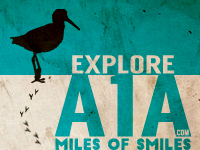
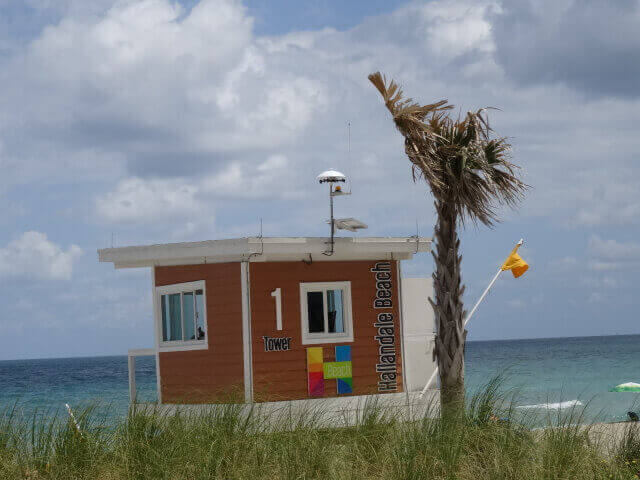
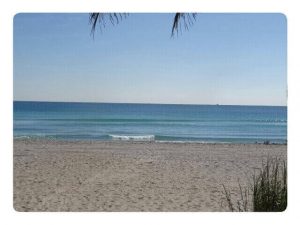
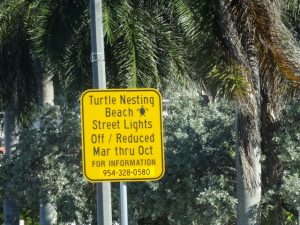
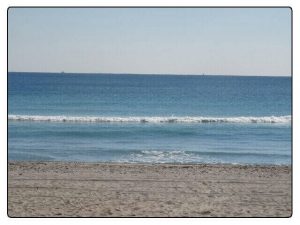
 In exploring the history of Hallandale Beach before the arrival of the first European settlers, we were introduced to the word “coontie”. Compelled to explore the word a bit further, we found a fascinating story by Susan Ford Collins on Flickr to share with you. Long before European settlers arrived in Florida, Native Americans used the coontie plant as a source of starch and the word itself comes from the Seminole meaning “bread” or “white root” because the roots can be made into flour. After being a money crop of the first Florida pioneers, the plant was nearly wiped out and with it, would likely have come the extinction of the iridescent blue and orange Atala Butterfly. Coontie plants contain a natural toxin which Atala larvae accumulate in their bodies and use to repel birds. Without coontie, adult Atalas have no place to lay eggs and no eggs, means no new generations. In an effort to preserve the colorful Atala, the coontie is being used increasingly in landscaping. And while we’re on the subject of color, the pic at the very top of this page is of the super colorful Hallandale Beach Ball Water Tower and if you decide to make your way here to explore, head to North Beach City Park, E Hallandale Beach Blvd, 33009.
In exploring the history of Hallandale Beach before the arrival of the first European settlers, we were introduced to the word “coontie”. Compelled to explore the word a bit further, we found a fascinating story by Susan Ford Collins on Flickr to share with you. Long before European settlers arrived in Florida, Native Americans used the coontie plant as a source of starch and the word itself comes from the Seminole meaning “bread” or “white root” because the roots can be made into flour. After being a money crop of the first Florida pioneers, the plant was nearly wiped out and with it, would likely have come the extinction of the iridescent blue and orange Atala Butterfly. Coontie plants contain a natural toxin which Atala larvae accumulate in their bodies and use to repel birds. Without coontie, adult Atalas have no place to lay eggs and no eggs, means no new generations. In an effort to preserve the colorful Atala, the coontie is being used increasingly in landscaping. And while we’re on the subject of color, the pic at the very top of this page is of the super colorful Hallandale Beach Ball Water Tower and if you decide to make your way here to explore, head to North Beach City Park, E Hallandale Beach Blvd, 33009.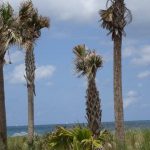 According to Seth Bramson’s book ‘Hallandale Beach Florida: For More than Ninety Years Broward County’s City of Choice’ the area we now know as Hallandale Beach was settled in the late 1800’s when Henry Flagler expanded the Florida East Coast Railway to Palm Beach. Realizing the value of the land to farmers, merchants and settlers, Flagler had James Ingraham (land commissioner for Flagler enterprises) work to increase “immigration” which at the time meant bringing in settlers from inside or outside America to Florida’s east coast. Ingraham then hired his brother-in-law Luther Halland to start a Swedish settlement south of the Danish settlement of Dania; the new settlement was to be named Halland in Luther’s honor. In 1898 Halland left the tiny village and upon his return to the area in 1911, was astounded by the town’s growth which had some years before had the letters “ale” added to its name. Hence, Hallandale began its rise to prominence; in August of 1999 the city officially changed its name to Hallandale Beach where this pic was shot and if you decide to come here and explore, make your way to 1870 S Ocean Dr., 33009.
According to Seth Bramson’s book ‘Hallandale Beach Florida: For More than Ninety Years Broward County’s City of Choice’ the area we now know as Hallandale Beach was settled in the late 1800’s when Henry Flagler expanded the Florida East Coast Railway to Palm Beach. Realizing the value of the land to farmers, merchants and settlers, Flagler had James Ingraham (land commissioner for Flagler enterprises) work to increase “immigration” which at the time meant bringing in settlers from inside or outside America to Florida’s east coast. Ingraham then hired his brother-in-law Luther Halland to start a Swedish settlement south of the Danish settlement of Dania; the new settlement was to be named Halland in Luther’s honor. In 1898 Halland left the tiny village and upon his return to the area in 1911, was astounded by the town’s growth which had some years before had the letters “ale” added to its name. Hence, Hallandale began its rise to prominence; in August of 1999 the city officially changed its name to Hallandale Beach where this pic was shot and if you decide to come here and explore, make your way to 1870 S Ocean Dr., 33009.

